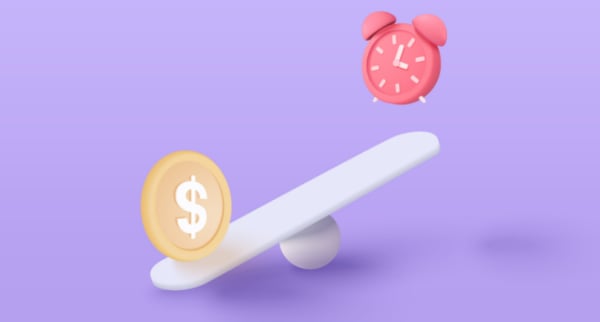Chase Slate Edge℠ review
The Chase Slate Edge℠ features a nice introductory 0% offer on purchases and balance transfers. It also presents a unique opportunity to reduce your debt and improve your credit score while enjoying the benefits of a credit card. Information related to Chase Slate Edge℠ has been collected independently by CardRatings and was neither reviewed nor provided by the card issuer.
Jump to Section
card_name
- Balance Transfer Intro
- APR: balance_transfer_intro_apr
Period: balance_transfer_duration_months - Balance Transfer Fee
- balance_transfer_fees
- Regular APR
- reg_apr,reg_apr_type
Key Features
descriptionEditor Analysis:
- Save money with an intro 0% APR on purchases and balance transfers for the first 18 months (then, RegAPR).
- Chase will consider you for a 2% APR reduction when you pay on time and spend at least $1,000 on your card before your next account anniversary.
- This isn't a rewards card. If your goal is a solid intro 0% offer and the opportunity to lower your ongoing APR, this shoe fits. If you're after rewards, look elsewhere.
Chase Slate Edge℠ benefits
You may understandably be carrying a credit card balance that you’d like to get rid of. You also may be a little understandably squeamish that your growing credit card balance, one of these days, is going to hurt your credit score.
If that’s you, you may want to check out the CardName credit card.
Why? Well, there are some compelling benefits for people looking to manage and whittle down their debt, including:
- 0% intro APR for 18 months from account opening for purchases and balance transfers (balance transfer fee applies; after the intro period a RegAPR APR applies)
- Automatic consideration for 2% APR reduction if you make timely payments and spend at least $1,000 on your card by your next account anniversary
- Automatic eligibility for a credit line increase if you make timely payments and spend $500 on your card in the first six months
- Access to Chase’s digital credit tools like Credit Journey and My Chase Plan
How can Chase Slate Edge℠ save you money?
If the card name sounds familiar, you’re likely remembering the old Chase Slate card once upon a time known for a lengthy balance transfer period and a truly rare feature – no balance transfer fee. This new card is focused on a great balance transfer offer, but goes a step further in terms of helping you save money.
If you skimmed the benefits laid out above, you can see at a glance how this card will save you money, but for those who are detail-oriented, we’ll drill down.
That 0% intro APR can help your bottom line
If you have anything you need to buy ‐ and pay off later – without worrying about interest, well, this would be a good credit card to consider. For 18 months, you can buy whatever you want – as big as a refrigerator or as small as a bag of jelly beans – and pay no interest. The catch is that if you don’t pay it all off in 18 months, of course, you will owe interest on those purchases; remember, the rate jumps to RegAPR after the intro period, so that could add up fast if you’ve spent 18 months accumulating a balance and not paying it off.
Additionally, if you already have credit card debt on a credit card with a high APR, transferring it to a Chase Slate EdgeSM could also save you money, and here’s where this credit card really delivers.
If you transfer credit card debt to this card, you’ll have 18 months during which that debt will just sit on the card without interest accruing from month to month. If you can pay off the debt in that time, you could potentially save, well, all of the interest you would have paid on another credit card.
➤ FREE TOOL:Balance transfer calculator
Certainly, you want consider the balance transfer fee (intro fee of 3% of each transfer with a $5 minimum for the first 60 days). That doesn’t sound like much, but if you transfer $1,000 in revolving debt to CardName, you’ll be charged $30. If you’re transferring $2,000, it’ll be $60. It’s just good to be thinking about these types of fees ahead of time so you aren’t surprised later. In either case, that fee is likely much lower than the interest you’d pay on the debt by leaving it on a card without a 0% intro APR.
You could save money in interest on an ongoing basis
This is a big, important reason to ponder getting this credit card if you are loaded down with revolving credit card debt. If you make timely payments (very important) and spend $1,000 on your card by your next account anniversary, you receive automatic consideration for a 2% APR reduction. Granted, that’s not the same thing as an automatic guaranteed reduction, but, still, Chase Slate EdgeSM seems serious about helping cardholders reduce their debt.
You might get a credit line increase
Pay your bills on time and spend at least $500 on the card in the first six months to receive an automatic one-time review for a credit limit increase. Remember, a credit line increase can lead to a higher credit score since it improves your credit utilization ratio, sometimes called the credit utilization rate. Basically, that means the amount of debt you have compared to the amount of credit available to you. For example, if you have a credit card with a $10,000 limit and you have a $2,000 balance, your credit utilization is 20%. Generally, lenders like to see cardholders borrowing no more than 30% of their available credit across all their cards. The lower you keep your utilization, the higher your credit score will climb. Higher credit scores can, in turn, bring about lower interest rates for credit cards, auto loans, mortgages and even insurance.
More help in managing your money
As noted earlier, if you have a Chase Slate EdgeSM credit card, you’ll receive access to Chase’s digital credit tools like Credit Journey and My Chase Plan. That may not sound like a really big deal, but the more digital financial tools you have, the more likely you can track your finances and manage your money better. And managing your money better could result in your saving more money.
How does debt affect your credit score?
Excellent question, and in some ways, almost a philosophical one. That’s because debt can help your credit score or debt can kill and burn your credit score to the ground. It’s all in how you manage that debt.
Lenders like to see people borrowing money, and they actually like to see them using credit cards – along with buying a house and a car and other things that often require loans. It sounds silly on the surface if you think, "Doesn’t it make you financially attractive to a lender, for instance, if you never borrow money?"
Actually, no. If you never borrow money, the lender isn’t really sure if you know how to handle a loan responsibly and that leads to a question of whether they can trust you to pay the loan back. If you truly have no history of ever borrowing money, you also have no history of paying money back. But with somebody else who does owe a mortgage company money and is paying off an auto loan or student loans or both – and has a few credit cards – lenders can see that rich history of paying lenders back and your credit score reflects that pattern of good behavior as well as experience managing debt. In this scenario, lenders know they’ll likely get paid back, too, if they issue a credit card or some sort of loan to the borrower.
So, yes, some debt can help your credit score.
But there is more to consider. If you have a house and a car loan and a few credit cards, and you’re constantly late in making your payments, or you’ve missed a few payments, then, naturally, lenders don’t like that at all, and suddenly that debt can be very bad for your credit score and, in turn, makes you look bad to lenders.
All of which means that debt can help or hurt your credit score.
The size of the debt also doesn’t really matter. If you have a revolving balance of $5,000, but you’ve been late with payments a couple of times or skipped a payment altogether, lenders will notice that pattern of behavior and could be hesitant to lend you more money.
On the other hand, if you have a revolving balance of $10,000 on your credit cards and you always pay your bill on time, lenders will look at that favorably.
➤ SEE MORE:Does carrying a credit card balance hurt your credit score?
So if you have debt, and you want to get a credit card, like the Chase Slate EdgeSM credit card, here’s what you want to pay attention to:
- Are you making monthly payments? As in, you’re not late? Good. Are you able to easily make those payments without having to pay your electric bill late? Or give up things like, well, eating food? Even better.
- Are you paying attention to the credit utilization ratio? As we mentioned earlier, lenders like to see that you’re using no more than 30% of your available credit. So if you are carrying a balance on your credit cards, and it’s under that 30%, you’re probably going to be in good stead with lenders. If you have a revolving balance that is, say, 50% or more, you’d want to try to pay off enough debt to get it below 30%. Easier said than done, sometimes, but that’s the goal.
- Are you paying attention to the interest you’re paying on your debt. That interest can destroy your finances. If you’re paying, 19.99% on revolving debt, your debt is growing, even as you’re trying to shrink it. That’s why minimum payments are often not enough to make much of a difference on your debt. It’s also why the CardName credit card could give you an edge on paying off debt – if you do a balance transfer to the card, that intro 0% APR interest rate for 18 months could give you the time you need to pay off your debt, without that debt growing via interest charges.
Potential downsides of the Chase Slate EdgeSM card
As with any credit card, they all have their ups and downs. There’s really one key disadvantage to having a CardName:
For starters, it isn’t a rewards card. You won’t get cash back, points or miles. If you carry a revolving balance on any card, the interest you pay generally negates the value of that cash back, points or miles, and so it makes sense to not offer rewards.
That said, if the card helps you reduce debt and save a ton of money in interest, that’s a big reward in itself.
One other drawback to keep in mind, however, is that this card does charge foreign transaction fees, so leave it at home for your next trip abroad.
How does the Chase Slate EdgeSM compare to other cards?
Period: balance_transfer_intro_duration
Period: balance_transfer_intro_duration
Period: balance_transfer_intro_duration
Chase Slate EdgeSM vs. CardName
discontinued
Both credit cards offer a 0% introductory APR period on purchases and balance transfers. CardName offers 15 months (then, RegAPR) while Slate EdgeSM gives you 18 months (then, RegAPR).
For a limited time, CardName offers new cardholders the opportunity to earn a signup_reward bonus after you spend signup_bonus_spend_amount on purchases in your first three months from account opening.
CardName cardholders earn:
- 5% cash back on travel purchased through Chase Travel℠, our premier rewards program that lets you redeem rewards for cash back, travel, gift cards and more
- 3% cash back on drugstore purchases and dining at restaurants, including takeout and eligible delivery service
- 1.5% on all other purchases
Neither card charges an annual fee and both charge foreign transaction fees, so the choice here will likely come down to whether the ongoing APR reduction opportunity is important to you. If you don’t need that, CardName offers the opportunity for rewards, but with a shorter 0% intro period.
Chase Slate EdgeSM vs. CardName
discontinued
Both credit cards offer a 0% introductory APR period on purchases and balance transfers, but CardName has a longer period at 21 months for balance transfers (then, RegAPR). BalanceTransferFees All balance transfers must be completed within 4 months of account opening. Citi is a CardRatings advertiser.
Though it offers a longer 0% period for balance transfers, the Citi card falls short of Slate Edge’s intro 0% APR on purchases, offering only 12 months. After that, the APR is reg_apr,reg_apr_type
It’s worth noting that the CardName doesn’t feature an automatic consideration for a credit line increase or APR decrease if certain criteria are met like Slate EdgeSM does.
Is Chase Slate EdgeSM a good card?
Chase Slate EdgeSM puts lowering your debt and raising your credit score front and center. It’s admittedly a bit odd for a card that wants to help you lower your debt to also offer an opportunity for a credit line increase, but considering that lower credit utilization can help your credit score, that credit line increase opportunity becomes more clearly aligned with the card’s goals. In the end, this card is a unique opportunity for a cardholder looking for a solid intro 0% period and a chance to improve their credit score.
Frequently asked questions
Does Chase Slate Edge℠ reimburse for Global Entry?
Does Chase Slate Edge℠ charge foreign transaction fees?
What credit score do you need for Chase Slate Edge℠ credit card?
Disclaimer:The information in this article is believed to be accurate as of the date it was written. Please keep in mind that credit card offers change frequently. Therefore, we cannot guarantee the accuracy of the information in this article. Reasonable efforts are made to maintain accurate information. See the online credit card application for full terms and conditions on offers and rewards. Please verify all terms and conditions of any credit card prior to applying.
This content is not provided by any company mentioned in this article. Any opinions, analyses, reviews or recommendations expressed here are those of the author’s alone, and have not been reviewed, approved or otherwise endorsed by any such company. CardRatings.com does not review every company or every offer available on the market.










